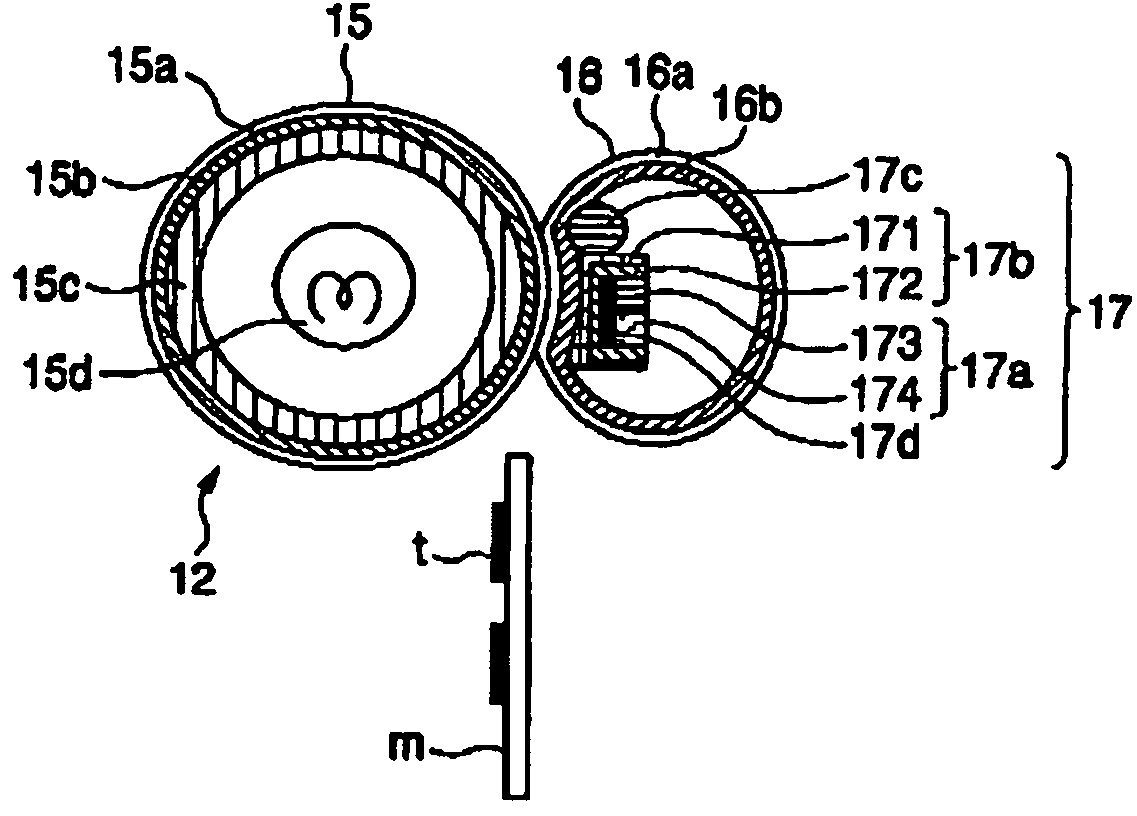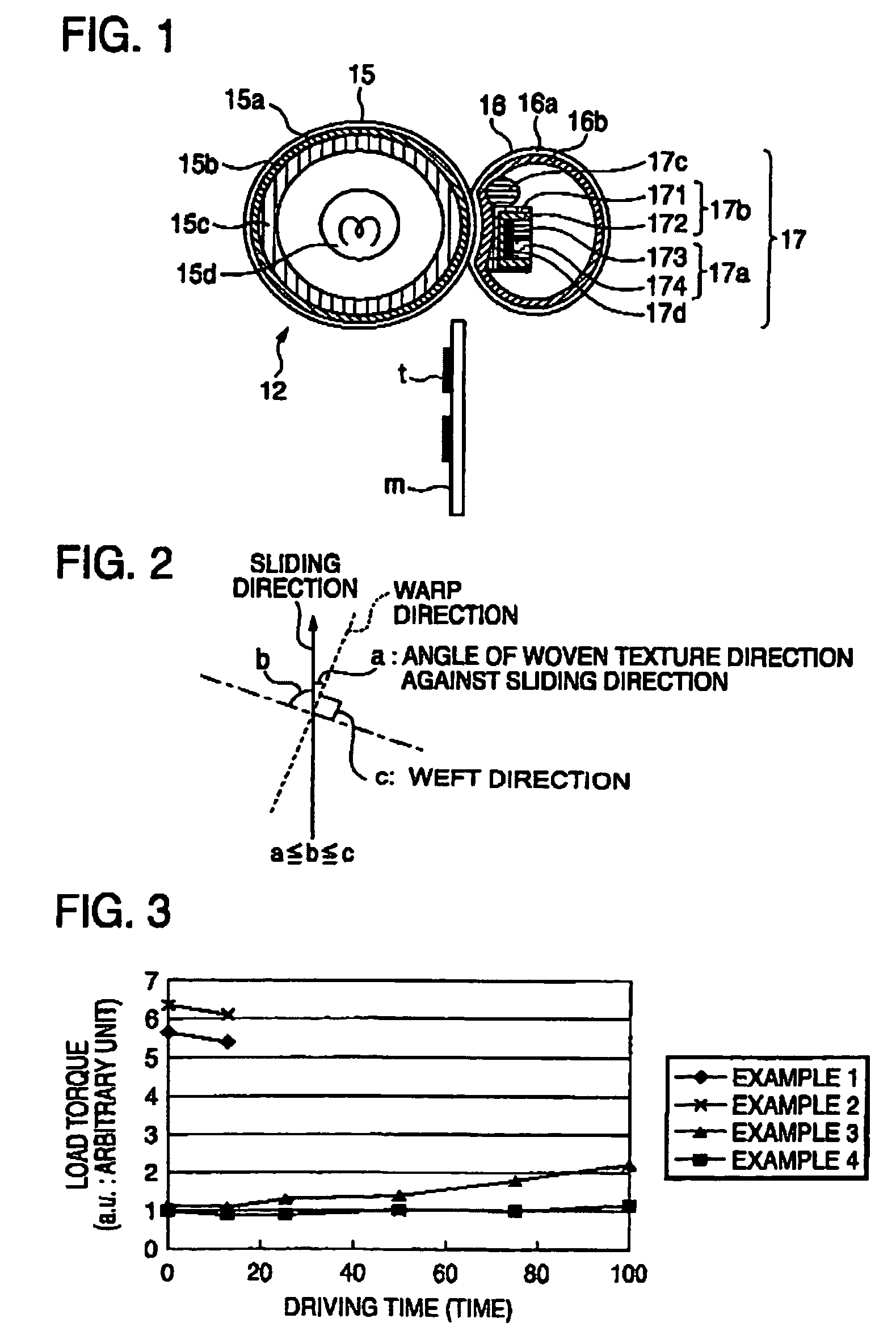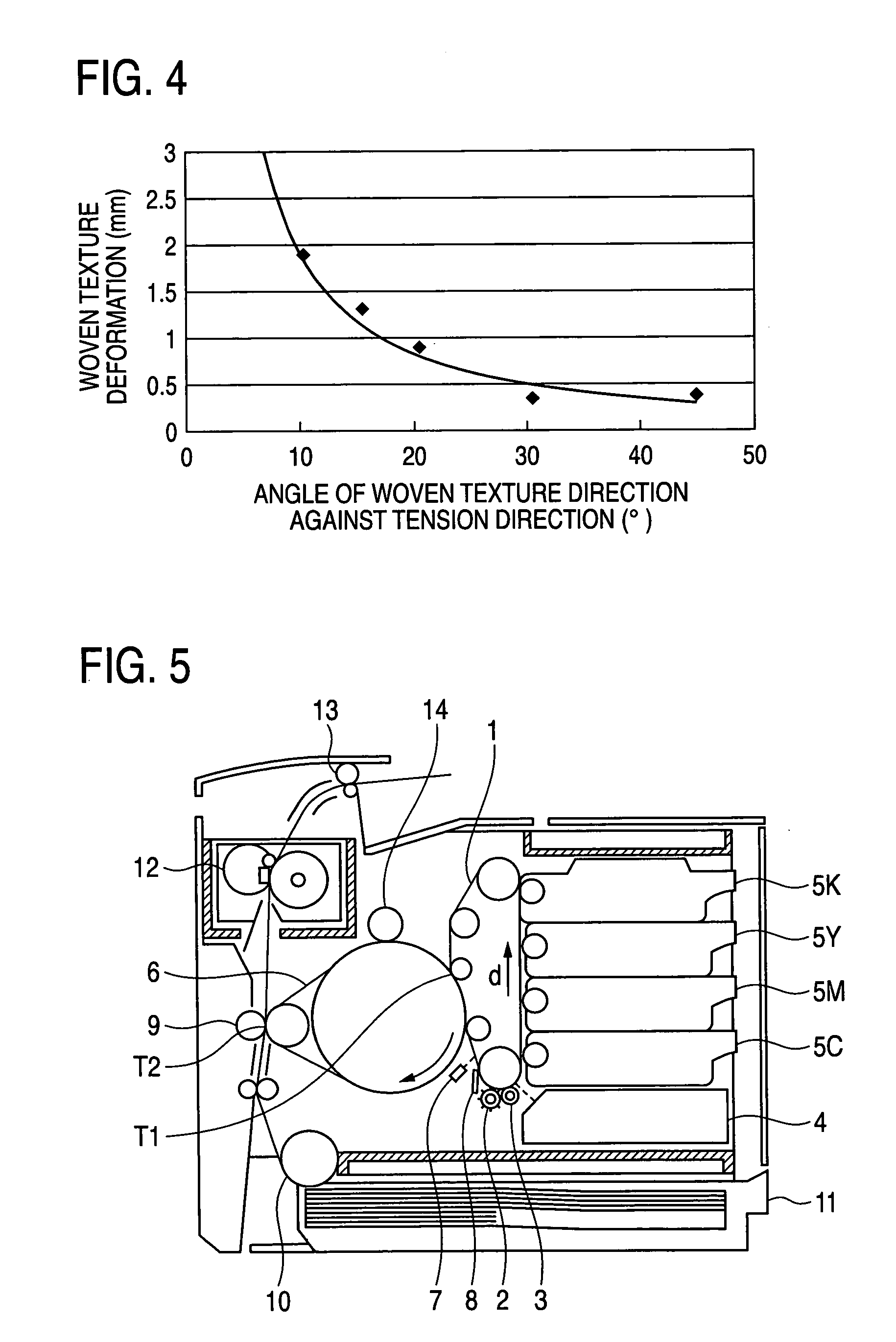Fixing device and image forming apparatus
a fixing device and image forming technology, applied in the field of fixing devices and image forming apparatus, can solve the problems of sharp increase of load torque, breakage of driving portion or damage to the surface of the roller, etc., and achieve the effect of reducing sliding frictional resistance with the endless bel
- Summary
- Abstract
- Description
- Claims
- Application Information
AI Technical Summary
Benefits of technology
Problems solved by technology
Method used
Image
Examples
example 1
[0042]In regard to a roller 15, a PFA tube having a thickness of 30 μm was used as a toner parting layer 15a; a silicone rubber having a thickness of 0.6 mm and a hardness of 20° (Shore hardness A) was used as an elastic layer 15b; and a cylinder made of aluminum having a thickness of 1 mm and a diameter of 40 mm was used as a support 15c.
[0043]In regard to an endless belt 16, a PFA tube having a thickness of 30 μm was used as a surface layer 16a; and a polyimide belt having a thickness of 50 μm and a diameter of 30 mm was used as a substrate 16b.
[0044]In regard to a pressure-applying member 17, an aluminum pad 173 and a silicone rubber pad 174 having a hardness of 20° (Shore hardness A) and a thickness of 4 mm was used as a pressing member 17a; a fluorine felt (available from Toray Industries, Inc.) having a thickness of 0.8mm was used as a sliding layer 17b; and a roller made of stainless steel having a diameter of 8 mm was used as a releasing roller 17c.
[0045]In regard to a he...
example 2
[0051]Same procedures as in Example 1 were performed except that a layer 172 on the side of being not in contact with an endless belt 16 was changed into an aramid felt having a thickness of 0.4 mm and a layer 171 on the side of being in contact with the endless belt 16 was changed into a porous PTFE film (available as POREFLON from Sumitomo Electric Industries, Ltd.)
[0052]According to Example 2, an oil component holding ratio was large as 86% while an effective contact area ratio was extremely large as 99%. The load torque in the above case was 6.1 (a.u.) when a driving time duration was 12.5 hours.
example 3
[0053]Same procedures as in Example 1 were performed except that a layer 172 on the side of being not in contact with an endless belt 16 was changed into a PTFE woven fabric (available as No. 406W from Toray Industries, Inc.) having a thickness of 0.4 mm and a layer 171 on the side of being in contact with the endless belt 16 was changed into a PFA net (available from Toray Industries, Inc.) and, also, a woven texture direction was changed to 45° against a sliding direction.
[0054]According to Example 3, an oil component holding ratio was small as 25% while an effective contact area ratio was extremely small as 1%. The load torque in the above case was 1.1 (a.u.) when a driving time duration was 12.5 hours. Although this value was lower than those in Examples 1 and 2, it was increased to 2.2 when the driving time duration was 100 hours.
PUM
 Login to View More
Login to View More Abstract
Description
Claims
Application Information
 Login to View More
Login to View More - R&D
- Intellectual Property
- Life Sciences
- Materials
- Tech Scout
- Unparalleled Data Quality
- Higher Quality Content
- 60% Fewer Hallucinations
Browse by: Latest US Patents, China's latest patents, Technical Efficacy Thesaurus, Application Domain, Technology Topic, Popular Technical Reports.
© 2025 PatSnap. All rights reserved.Legal|Privacy policy|Modern Slavery Act Transparency Statement|Sitemap|About US| Contact US: help@patsnap.com



